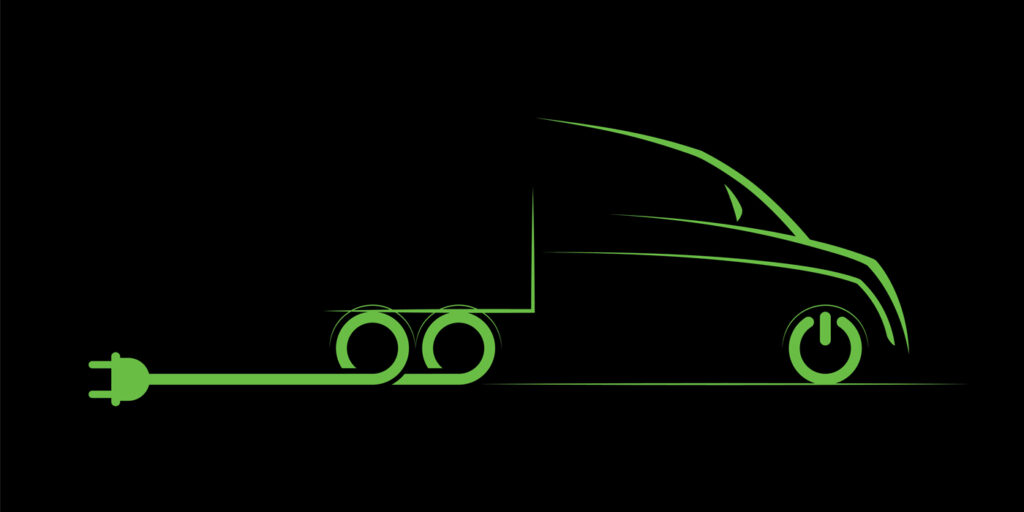As concerns about climate change multiply throughout the world, pressure is rising in the transportation sector to move toward electric vehicles (EVs), whether they are hybrid electric vehicles (HEVs) or battery electric vehicles (BEVs). In some cases, governments are directly regulating the light-duty vans and trucks that make up your fleet. In other cases, they are simply tightening up carbon dioxide (CO2) emissions standards. Either way, the vehicles that make up your fleet are going to evolve.
At the same time, the fluids used to keep your fleet operating at peak performance are also evolving to keep pace with these revolutionary changes. As e-hardware continues to develop and evolve, powertrains are being modified to incorporate electric motors. There are many questions around which lubricants should be used in the newly designed hardware configurations. To minimize complexity, it is tempting to use traditional fluids like automatic transmission fluids (ATF), but these are increasingly less suitable because of the specific demands of e-powertrains. Some fleet managers have learned the hard (and costly) way that putting traditional lubricants in EVs can sometimes destroy electric motors.
Lubricant manufacturers are working hard to engineer new lubricants, often referred to as e-fluids, that will protect the extensive electrical wiring, optimize electrical conductivity and improve the operational efficiency of e-devices in ways that conventional lubricants can’t. Let’s explore what must change for e-fluids to be effective and what the future looks like as electric vehicles become more prevalent.
Challenges with lubricating electric vehicles
The goal of any lubricant, whether it is used in a vehicle powered by electricity or fossil fuels, is to protect the parts and ensure that the vehicle will operate at its peak performance over its entire lifetime. The way this protection is delivered is fundamentally different for electric vehicles versus those with internal combustion engines because their hardware is so different.
The critical difference between gearboxes in electric vehicles versus traditional axles and transmissions is that the EV can incorporate the motor, and possibly the inverter, into the gearbox itself. This brings the lubricant into contact with many new parts and physical phenomena to which it has never been previously exposed. e-Fluids must be compatible with all portions of the hardware, be stable across a broad temperature range, exhibit appropriate electrical properties and potentially serve as the cooling fluid itself.
Gearboxes with incorporated motors have significantly more copper components, including up to six kilometers of copper wiring. One of the biggest challenges associated with lubricating e-devices is ensuring the lubricant is compatible with all of the copper parts while still delivering the appropriate gear and bearing protection.
Gearboxes generally operate within a moderate temperature range but can experience higher operating temperatures when exposed to the motor and during severe driving conditions. Lubricants can oxidize over time when exposed to high temperatures, potentially causing the formation of deposits or sludge. e-Fluids should be specifically designed to resist oxidation and deposit formation which can occur during high temperature excursions.
Exposure to the electric motor introduces a brand-new lubricant property which needs to be managed: electrical conductivity. When fluid electrical conductivity is too high, current leaks from the system, potentially reducing efficiency and creating shock hazards. If the conductivity is too low, static discharge can occur and cause pitting on the components. Therefore low, but not too low, electrical conductivity is desired, and OEMs all have different conductivity requirements derived from their specific hardware arrangements.
Maximizing efficiency is a concern for OEMs and owners and is therefore a critical factor in fluid design. The optimal fluid properties for maximizing efficiency depend on the hardware design and vehicle duty cycle. It is generally accepted that using lower viscosity lubricants can improve efficiency under mild to moderate conditions. Reducing fluid viscosity also improves heat transfer capability, which is desirable by all OEMs. Unfortunately using lower viscosity lubricants can potentially cause foam or aeration, hurt load carrying capability and increase electrical conductivity. One of the biggest hurdles facing lubricant manufacturers today is balancing the need for lower-viscosity oils with the need to ameliorate associated performance detriments.
What this means to you
As electrification becomes more prominent in light-duty trucks and vans, the composition of your fleets will likely change as well. Traditional lubricants are not designed to handle the additional rigors that come with operating in an e-device, especially when the lubricant is exposed to the motor, so application-specific e-fluids will become more prevalent.
About the authors
Amanda Eastwood is a product manager for Driveline Additives, Lubrizol Corp., based in Hazelwood UK, with global responsibility for electrified driveline product lines. Prior to joining Lubrizol, Amanda worked in the European chemical industry in a variety of commercial and technical roles, both in Germany and the UK. In the last 15 years, Amanda’s focus has been in the lubricant and metalworking industry. Amanda has a Bachelor of Science in Chemistry with French and a PhD in Organic Chemistry, both obtained from the University of Hull.
Suzanne Patterson is a technology manager for Driveline Additives, Lubrizol Corp., located in the United States, with global responsibility for axle and electrified vehicle fluid platform development and product support. Suzanne has been with The Lubrizol Corporation for 17 years working in the chemical synthesis of viscosity modifiers and small molecules before moving to Driveline. Suzanne received her PhD in organic chemistry from The Ohio State University.














